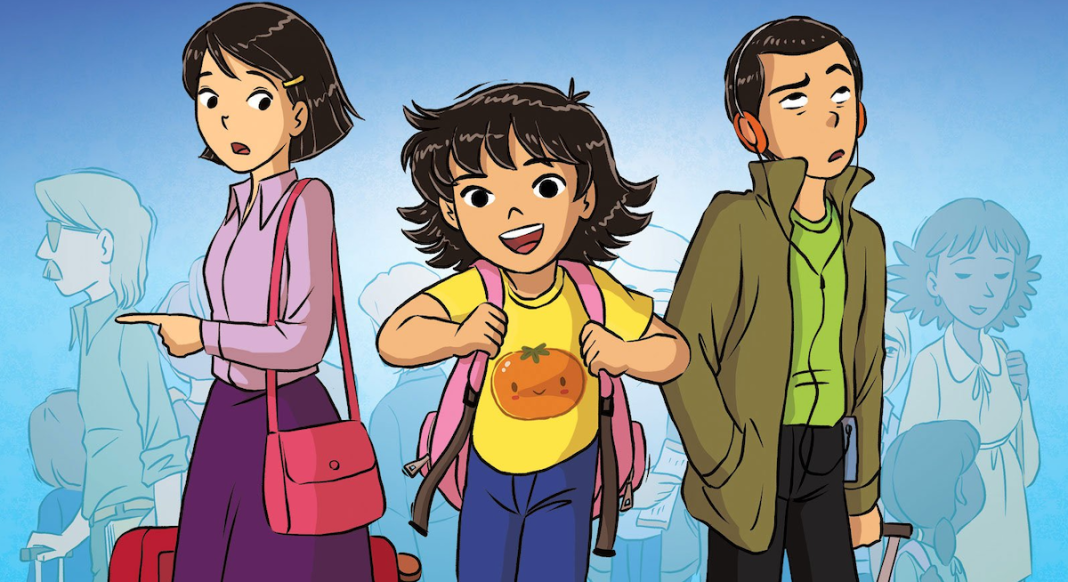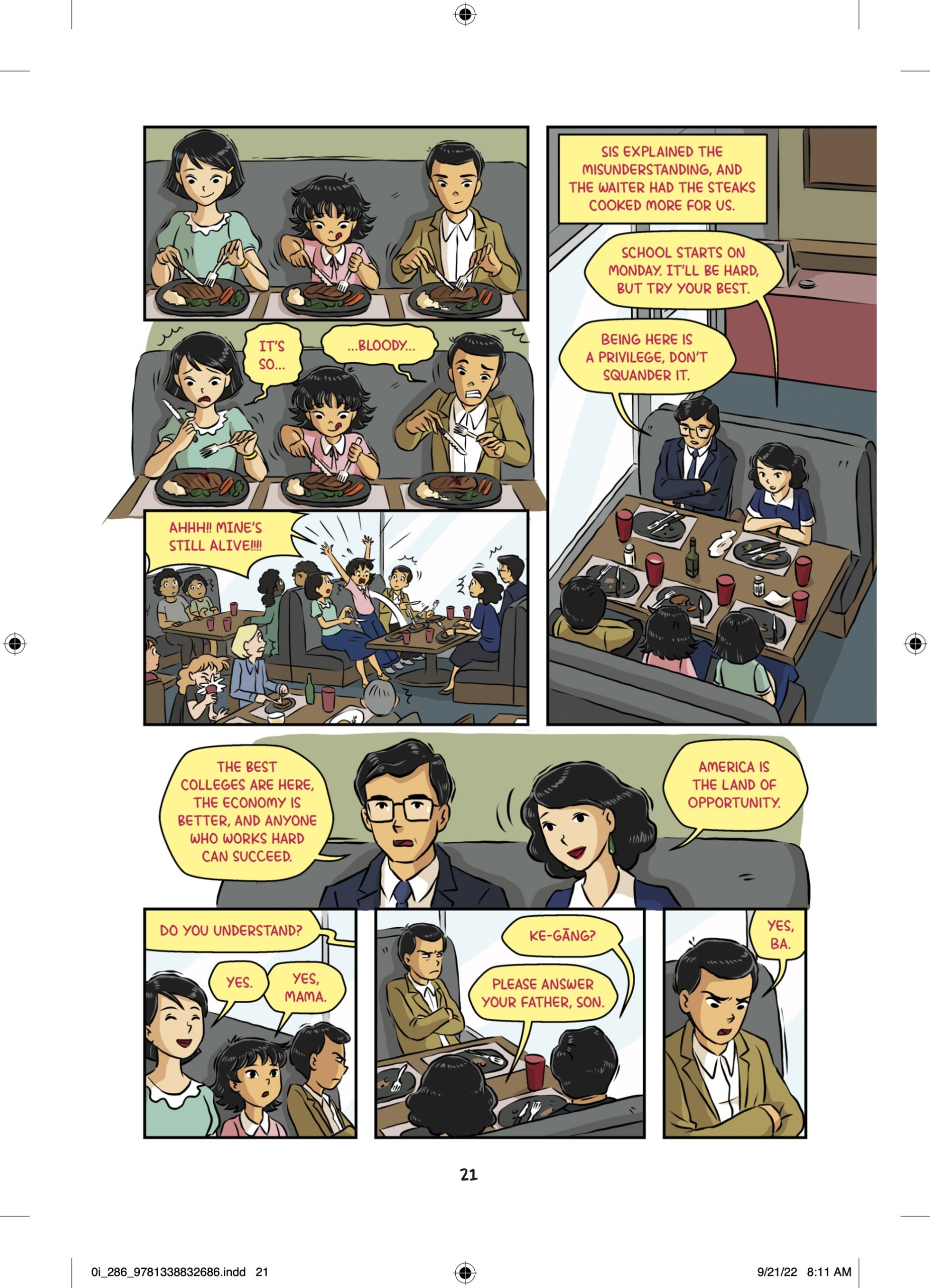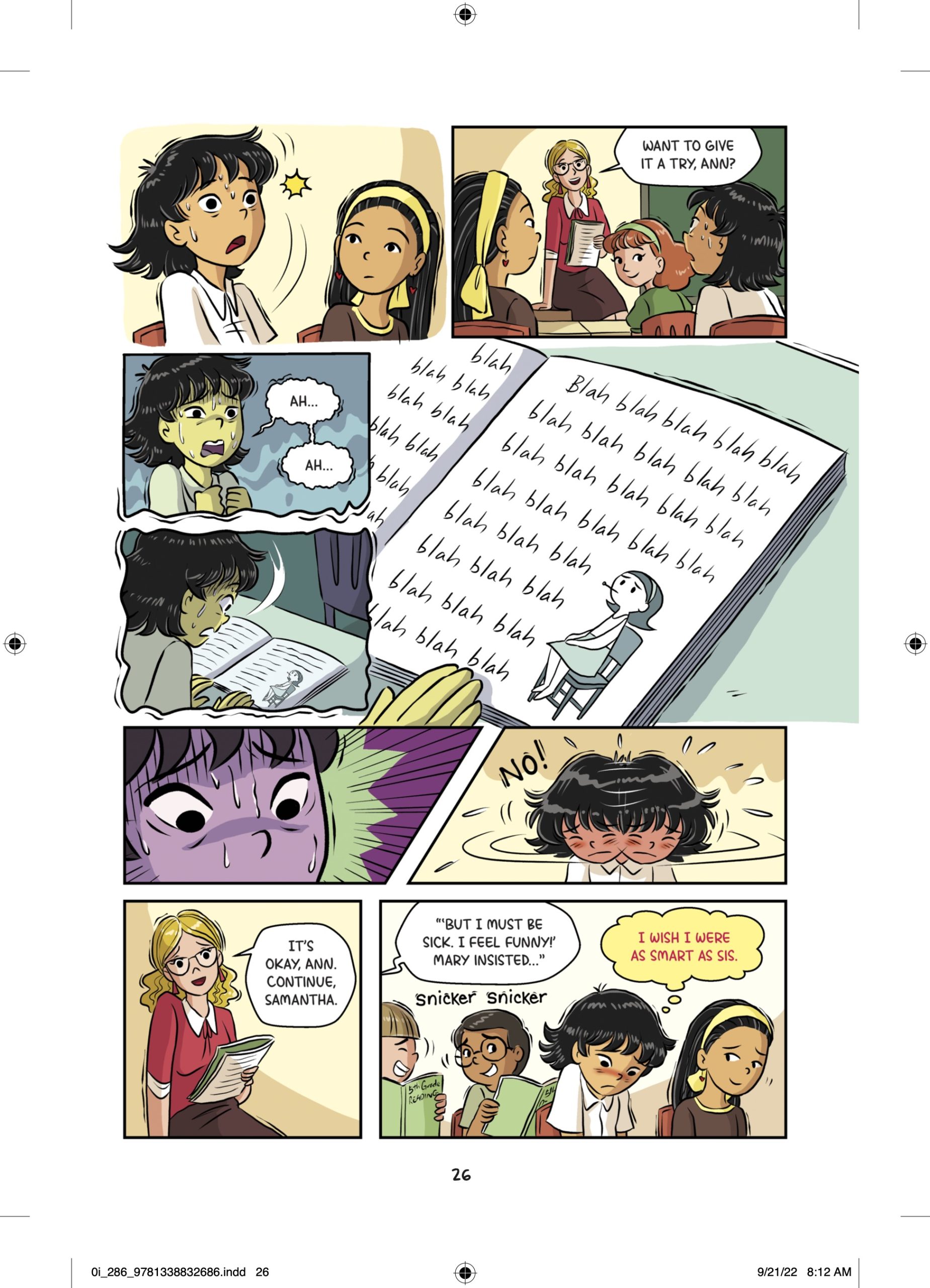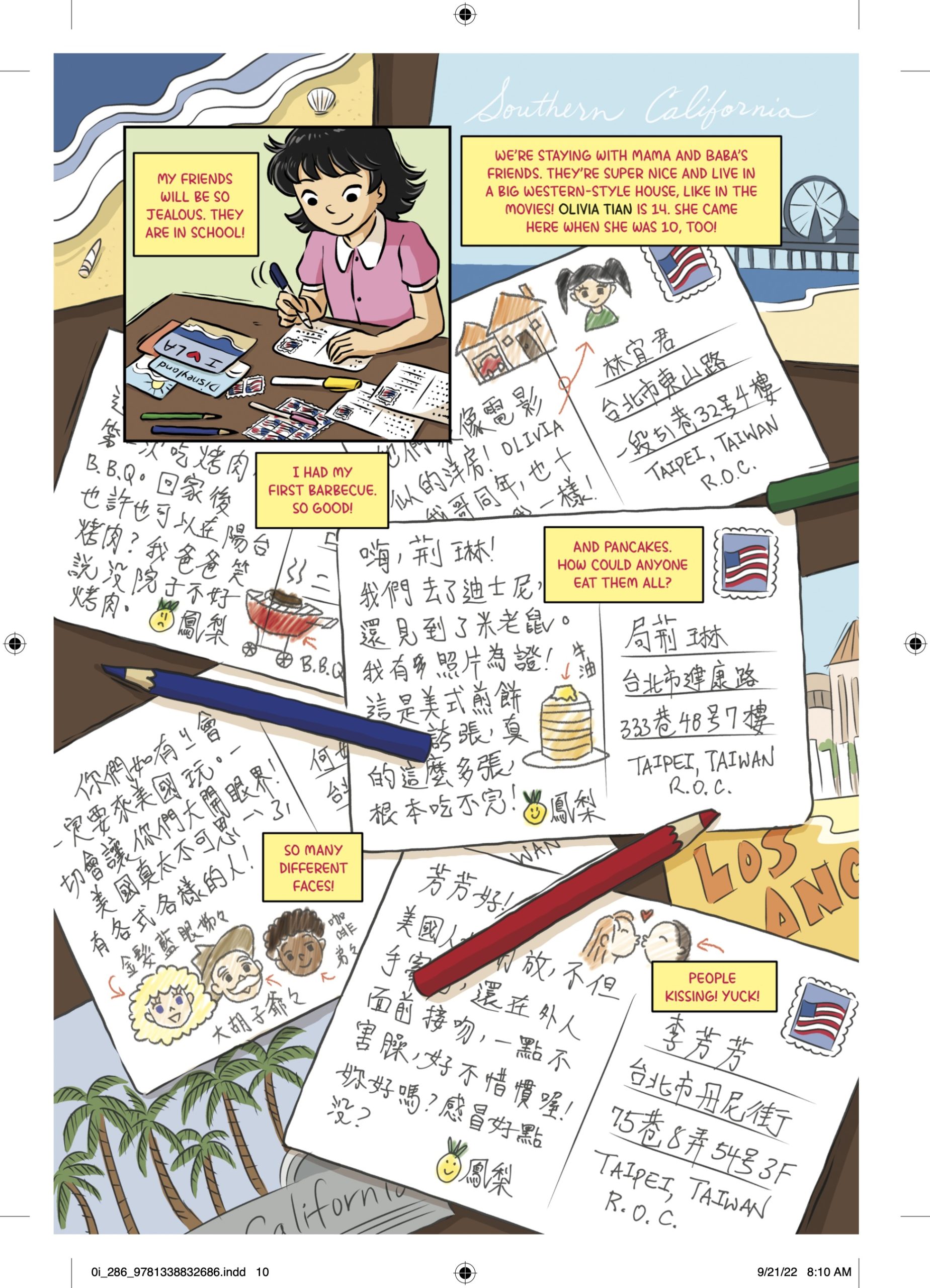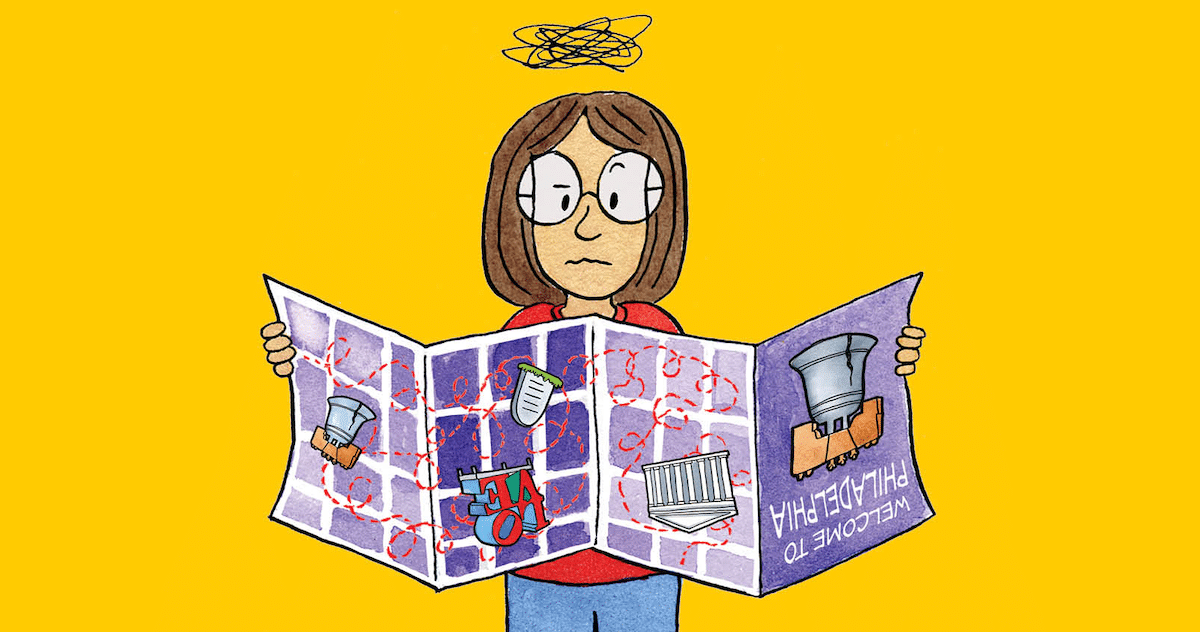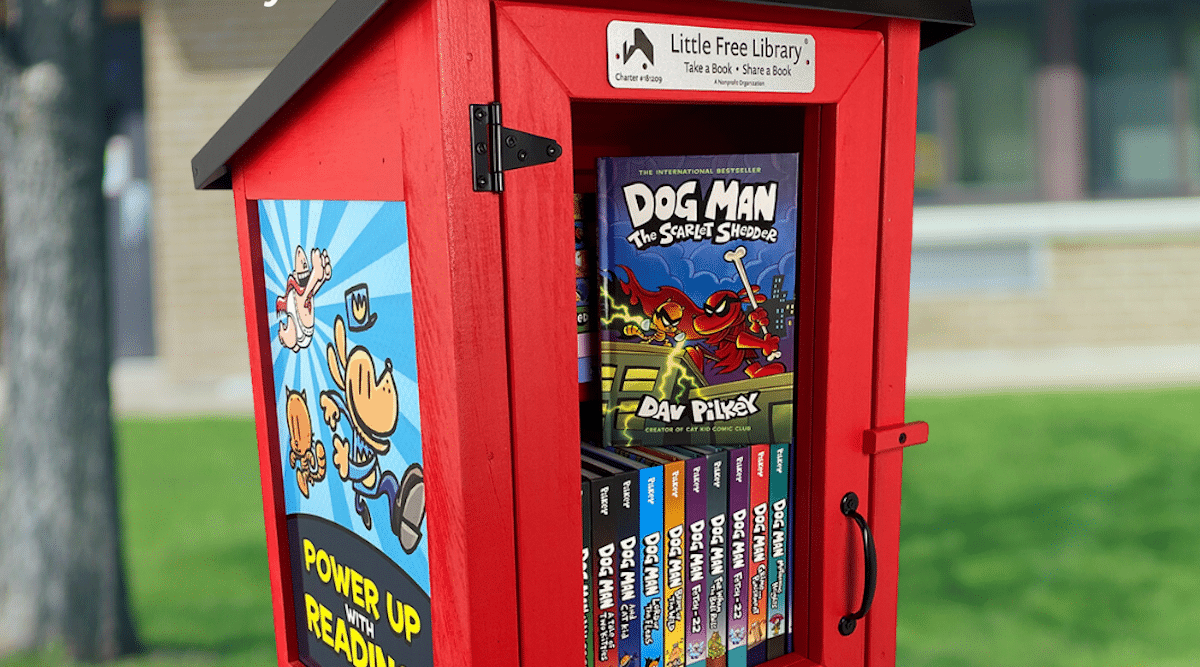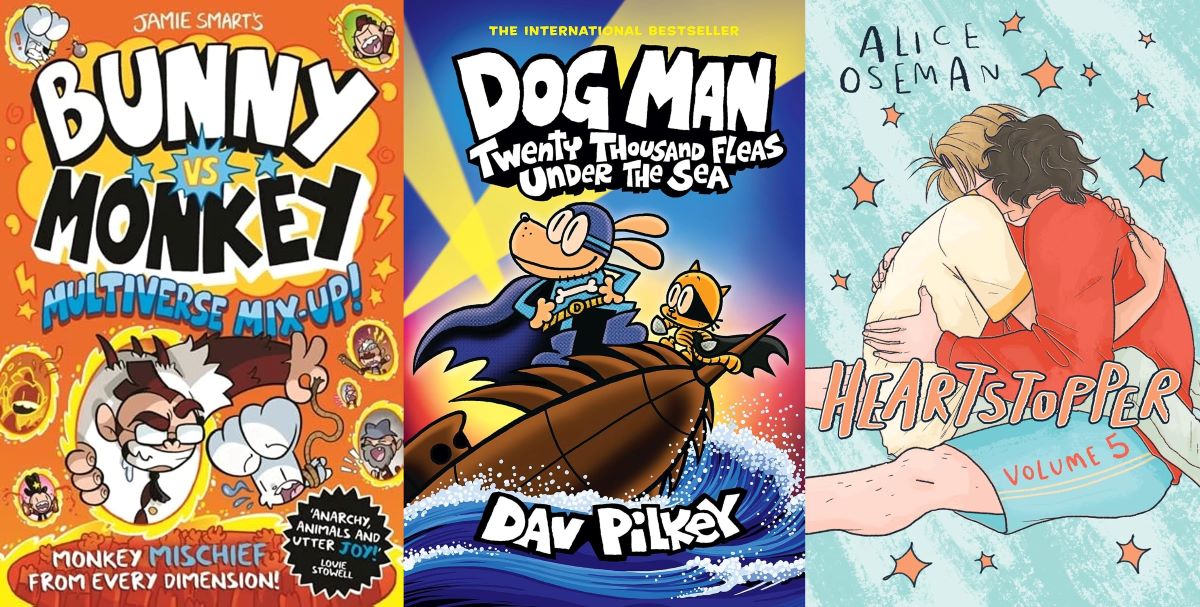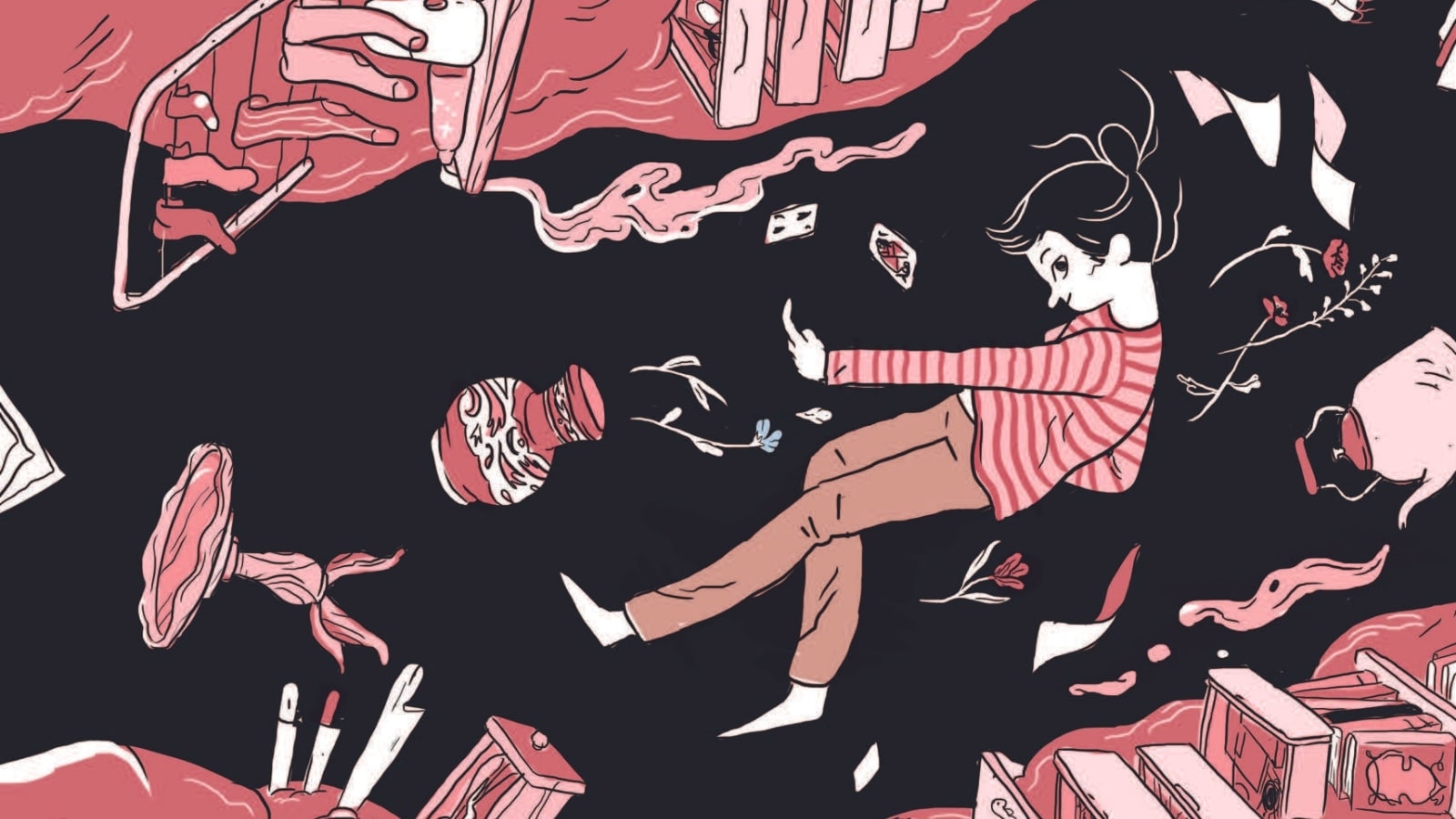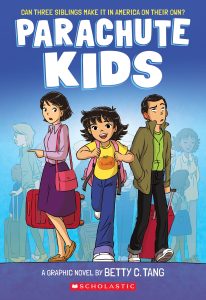
The Beat caught up with Tang over email to learn all about the process of combining personal experience with the anecdotes of others, to find out how her background in animation informed the structure of Parachute Kids, and to discover whether or not the cartoonist shares the protagonist’s affinity for video games!
AVERY KAPLAN: Can you tell us about the genesis of this graphic novel?
BETTY C. TANG: When I told a friend of mine about my childhood as a parachute kid, he said he’s never heard of the term. Upon further inquiry, I realized he wasn’t the only one. Most people outside the Asian community don’t know it, so I suspect many of your readers might not either. Parachute kids refer to children who are dropped off in foreign countries with friends or relatives while their parents stayed behind to work in order to support them. I thought more people should know about the plight of these children. As you can imagine, being left behind by your parents can be quite distressing, if not downright an everlasting traumatic experience. In my book, we follow three siblings, ages ranging from ten to sixteen, who suddenly find themselves in this situation. Not only do they have to fend for themselves in a new world not of their own choosing, but they have to learn to get along and work together, or there might not be a family left.
KAPLAN: As you write in the afterword, Parachute Kids is “not a memoir, but a mixture of fiction, [your] family’s first experiences in America, and anecdotes of immigrant friends [you] met along the way.” What was the process of combining these elements like?
TANG: I am so grateful to those who generously shared their personal stories. I knew I had wanted to tell an uplifting story about the three siblings and the challenges they faced, so I started with some of my own experiences. But mine alone wasn’t enough, so I reached out to my immigrant friends and they eagerly shared. They had so much to tell! In addition, I also searched through the news, and read about anything related to immigrant experiences. So from all the rich anecdotes I had collected, I made an outline of the plot, devised challenges for each of my three characters, and served them up in an engaging and entertaining way.
KAPLAN: One of the excellent sequential graphic narrative storytelling tools utilized throughout Parachute Kids are the page layouts and designs. What goes into arranging the panels on a page so deftly?
TANG: Thank you so much! It means a lot to me that you found the layout and design successful. This is a tough question to answer, because it all came kind of naturally to me. I just knew I wanted to think outside of the box—literally—and avoid having only rectangular boxes and try to make the page look interesting. And because I have on average six to seven panels per page, I needed to find creative ways to utilize as much space as possible, without it looking overcrowded. Sometimes we just don’t need to see all those empty spaces behind talking heads, bounded by borders.
KAPLAN: Ann is a bit of an aspiring gamer. Were you interested in video games at her age, and if so, does this interest persist and do you have a favorite game?
TANG: Yes! The one that pops into my mind immediately is Myst, the original text-only version. I know I had some Nintendos Game & Watch but I can’t remember which particular ones. Right now I’m hooked on Hovoverse’s Genshin Impact. If I don’t make deadline with my the current manuscript I’m working on, it’d be this game’s fault.
KAPLAN: At what point in the creative process for Parachute Kids did this innovative method of color-coded lettering and word balloons emerge?
TANG: I can’t take credit for it. Originally I had used black for English and red for Chinese, both over white word balloons. Then the art department came back and said, uh, Betty, you can only use black, cyan, or magenta for text. Duh. Of course! Facepalm. Then they came to the rescue and suggested a magenta text layer set on passthrough over a yellow word balloon, which made the text look red! Genius! And I think the end result is great. The yellow balloons added extra vibrancy to the pages. I’m telling you, teamwork!
KAPLAN: Do you have any favorite outfits worn by any of the characters in Parachute Kids? Were any of them based on specific pieces of actual clothing?
TANG: I just remember I used to wear a lot of cartoony T-shirts, so I transferred that for Feng-Li, the ten-year-old. But I did have the older sister in the book wear more dresses and outfits because coming from Taiwan in the 80s adults in general dressed more formally. Later when I got older, I of course inherited much of her clothing, and I remember classmates asking me why I’m always dressed like that.
KAPLAN: According to your author bio, you have also worked in animation. Did this experience inform your work on Parachute Kids?
TANG: Absolutely. My book is actually based on the four-act animation movie format and I think it works really well in keeping the viewers/readers engaged, similar to the method described in Blake Snyder’s book Save the Cat. I wanted my graphic novel to flow, basically be read like how you’d watch a movie. Sometimes when readers tell me they had read it in one breath, I’d joke and say they should slow down because it took me a year to create, but honestly they were supposed to. It was designed that way.
KAPLAN: Is there anything else you’d like me to include?
TANG: When my editor told me the launch date for Parachute Kids was to be April 4th, I got goosebumps. April 4th is not only Children’s Day in Taiwan, it is also the date my family and I first arrived in the United States 42 years ago. I can’t help but think that I was meant to write this book. I am so grateful for the opportunity. Thank you so much for your thoughtful and interesting questions!
Parachute Kids is available now.


